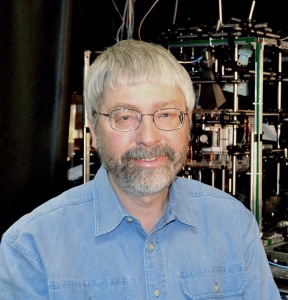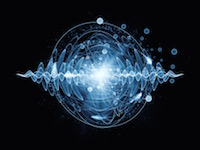
- Speaker: Prof. Jessen, Poul (University of Arizona, USA)
- Date: April 18, 2017
- Place: Science Building 433
Abstract
Quantum Control in large Hilbert spaces is an essential part of the toolbox for Quantum Information Processing. Even so, for systems with Hilbert space dimension , the design of control Hamiltonians and the feasibility of robust implementation have only recently been explored in the laboratory. To this end we have developed a test bed for quantum control, consisting of the dimensional hyperfine manifold associated with the electron-nuclear spins of individual 133Cs atoms driven by radio-frequency and microwave magnetic fields. I will begin with a brief review of some experimental work on Optimal Control with this system [1], in which we demonstrate accurate and robust control ranging from state-to-state maps to arbitrarily chosen unitary transformations.
The degree of control available with our electron-nuclear spin system makes it an interesting test bed for Analog Quantum Simulation. Broadly defined, an Analog Quantum Simulator is a controllable quantum system whose time evolution can emulate a target Hamiltonian of interest, e. g., a quantum gas in an optical lattice whose behavior is described by a Bose-Hubbard Hamiltonian. Regardless of the physical details, all implementation of AQS face a common challenge: in a sufficiently complex analog device without error correction there is the potential for exponential loss of precision due to small imperfections; in the classical world this manifests itself as deterministic chaos where the effects of small perturbations are exponentially amplified over time. Given that imperfections are unavoidable in any real-world scenario, this raises the fundamental question whether one can trust the output of a non-trivial analog quantum simulation.
As a step towards addressing these issues we are using our electron-nuclear spin system as an AQS to simulate a popular paradigm for quantum chaos, the Quantum Kicked Top. The QKT is a periodically driven spin J, with each cycle consisting of a fixed rotation followed by a one-axis nonlinear twist [2]. For our work here we assume a QKT with , map it onto our AQS, and use our toolbox for Optimal Control to implement the appropriate dynamics. I will discuss recent experimental results that shed light on some questions of general interest to AQS: How accurate must the control be to obtain a faithful simulation? In particular, how many cycles of QKT dynamics can we simulate before the physics of interest (phase space structure, entanglement generation, critical points of phase transitions, etc.) is compromised by control errors? Is there an optimal map from system to simulator? And how far can the duration and/or accuracy of the simulation be meaningfully extended through the application of robust control techniques?
References
- B. E. Anderson, H. S. Martinez, C. A. Riofrio, I. H. Deutsch, and P. S. Jessen, “Accurate and Robust Unitary Transformations of a High-Dimensional Quantum System,” Phys. Rev. Lett. 114, 240401 (2015).
- S. Chaudhury, A. Smith, B. E. Anderson, S. Ghose, and P. S. Jessen, “Quantum signatures of chaos in a kicked top,” Nature 461, 768 (2009).
